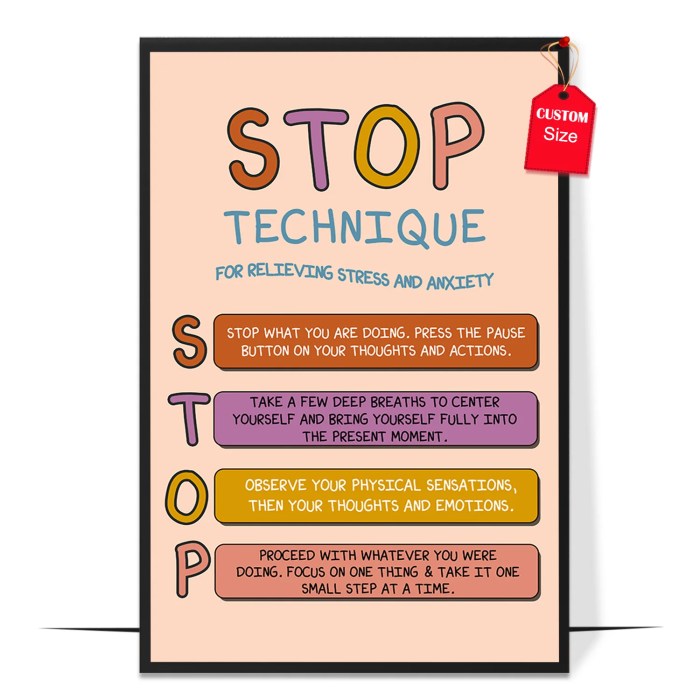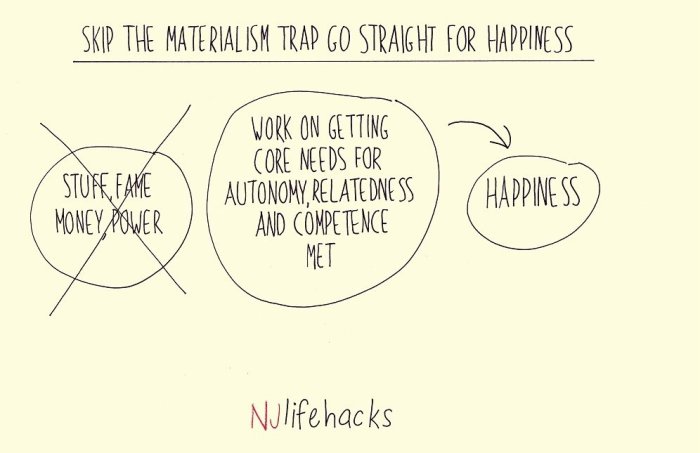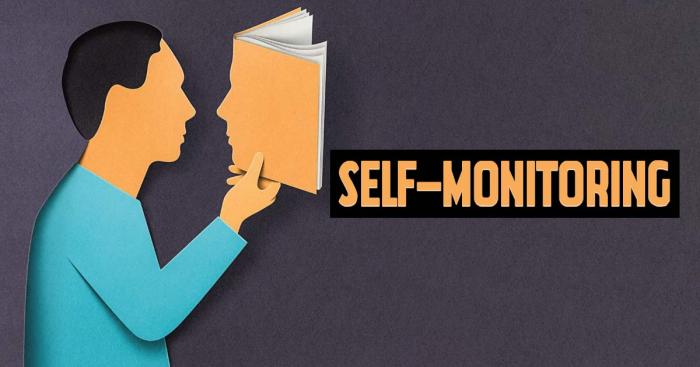Hit the wall in life – a familiar feeling for many. It’s that point where the relentless push of daily struggles feels overwhelming. Whether it’s the relentless demands of a career, the emotional toll of relationships, or the pressure of personal goals, we all face moments where it seems like progress is impossible and the road ahead is a dead end.
This exploration dives into understanding the phenomenon of “hitting the wall,” its underlying causes, recognizable symptoms, and practical strategies for overcoming it.
This journey delves into the common experiences of individuals who’ve encountered this wall. We’ll examine the diverse contexts where it occurs, from the physical exhaustion of a marathon to the emotional burnout of a challenging relationship. We’ll explore the factors contributing to this feeling, offering insights into the root causes. Ultimately, we’ll equip you with a toolkit of strategies to navigate these tough times and emerge stronger on the other side.
Defining the “Hitting the Wall” Phenomenon
The phrase “hitting the wall” encapsulates a universal human experience – a feeling of overwhelming exhaustion and frustration that often arises during periods of intense effort or significant change. It’s not just about physical exertion; it can manifest in emotional, professional, and even personal contexts. Understanding this phenomenon is key to recognizing its signs and developing strategies to overcome it.This feeling is not merely a temporary setback; it’s a complex interaction of physical, mental, and emotional factors.
It’s a sign that the individual’s resources are being stretched beyond their capacity, requiring a shift in approach or a period of rest and recovery. Recognizing the specific context of the “wall” is crucial for effective management.
Different Manifestations of “Hitting the Wall”
This phenomenon encompasses a broad spectrum of experiences, varying across different life stages and contexts. Understanding these diverse manifestations is essential to recognizing the signs and developing effective strategies for coping.
| Description | Context | Example | Impact |
|---|---|---|---|
| Feeling overwhelmed by the sheer volume of tasks and responsibilities. | Professional | A project manager tasked with managing multiple, complex projects simultaneously might experience this feeling. | Reduced productivity, increased stress, potential errors in judgment. |
| Experiencing a sudden and profound loss of motivation or enthusiasm. | Personal | A student struggling to complete their coursework despite having the necessary knowledge and resources might experience a loss of motivation. | Potential for stagnation, feelings of hopelessness, difficulty engaging in positive activities. |
| Physical exhaustion and pain, coupled with mental fatigue. | Physical | A marathon runner experiencing extreme physical and mental exhaustion during the final stretch of the race. | Muscle pain, decreased endurance, potential injury. |
| A feeling of stagnation and a lack of progress despite continued efforts. | Personal Growth | A writer struggling to complete a novel despite consistent work sessions, facing a writer’s block. | Discouragement, a sense of futility, feelings of inadequacy. |
| Emotional burnout and detachment. | Emotional | A caregiver for a chronically ill loved one might experience emotional burnout and detachment from their social life and other personal pursuits. | Isolation, depression, potential for relationship strain. |
Contextual Understanding
Understanding the context in which “hitting the wall” occurs is critical for developing effective strategies for recovery and moving forward. The table above highlights the diverse scenarios where this experience can occur, demonstrating the importance of recognizing the specific factors contributing to the individual’s state. Recognizing the context enables individuals to tailor their approach to overcoming the “wall” effectively.
Identifying the Underlying Causes
The feeling of hitting a wall, that plateau of exhaustion and frustration, often feels insurmountable. Understanding the root causes is the first step towards overcoming it. It’s not just about recognizing the symptoms; it’s about digging deeper to uncover the underlying factors fueling this experience. This often involves introspection and self-awareness, acknowledging the intricate interplay of various elements.The “hitting the wall” phenomenon isn’t a singular experience; its causes are as diverse as the individuals experiencing it.
These reasons can range from seemingly minor stressors to deeply ingrained patterns of behavior. Pinpointing the specific triggers is crucial for developing effective strategies to move past this feeling of stagnation.
Potential Reasons for Experiencing a “Hitting the Wall” Moment
Various factors contribute to this feeling of being overwhelmed and stuck. Burnout, characterized by emotional, physical, and mental exhaustion, is a significant contributor. Stress, whether chronic or acute, can create a sense of being overwhelmed, leading to decreased productivity and motivation. Lack of motivation, stemming from a loss of interest or a perceived lack of progress, can also be a major factor.
It’s crucial to acknowledge that these factors aren’t mutually exclusive; often, they intertwine to create a complex and challenging experience.
Feeling stuck? Hitting that life wall can feel overwhelming. But remember, small steps can make a big difference. Try taking some time to explore new possibilities and consider these 10 small things you can step outside your comfort zone 10 small things you can step outside your comfort zone. Even these minor shifts can help you move forward and conquer those obstacles you’ve been facing, eventually getting you unstuck.
So, don’t let the wall stop you, start small!
Common Contributing Factors
Several common factors frequently contribute to the feeling of hitting a wall. Burnout, a state of physical and mental exhaustion, often manifests as a lack of motivation, decreased energy levels, and feelings of cynicism. Chronic stress, whether stemming from work, relationships, or personal circumstances, can create a persistent sense of pressure and overwhelm. Prolonged periods of stress can manifest in physical symptoms like headaches, muscle tension, and digestive issues, impacting daily functioning and motivation.
A lack of motivation, characterized by a reduced drive and enthusiasm, can be triggered by various factors such as boredom, a feeling of being stuck, or a perceived lack of progress. These factors can significantly impact overall well-being and hinder progress.
Categorizing Contributing Factors
The following table categorizes and exemplifies the common contributing factors to the “hitting the wall” experience, highlighting their descriptions, examples, and the potential impact they have.
Feeling that familiar “hit the wall” moment in life? Sometimes, a simple shift in diet can make a world of difference. Fueling your body with nutritious foods like sweet potatoes can be a game-changer. Check out amazing benefits sweet potatoes 5 refreshing recipes for some delicious and healthy ways to incorporate them into your meals.
These surprisingly versatile root vegetables can boost your energy levels and help you get back on track, overcoming those moments when you feel like you’ve hit a plateau. Finding that extra pep in your step, whether through delicious recipes or a more balanced diet, is key to overcoming any life hurdle.
| Category | Description | Example | Impact |
|---|---|---|---|
| Burnout | Physical, emotional, and mental exhaustion resulting from prolonged stress and excessive demands. | Working 60+ hours a week for months without breaks or downtime. | Reduced productivity, decreased energy levels, increased risk of illness, cynicism, and disengagement. |
| Stress | A feeling of being overwhelmed or pressured by demands or challenges. | Dealing with a demanding job, family responsibilities, or financial concerns. | Anxiety, difficulty concentrating, physical symptoms (headaches, muscle tension), and decreased motivation. |
| Lack of Motivation | A reduced drive and enthusiasm to pursue goals or tasks. | Feeling uninspired or uninterested in a project or work routine. | Procrastination, avoidance of tasks, reduced productivity, and feelings of hopelessness. |
| Lack of Support | Insufficient emotional, practical, or social support. | Feeling isolated or alone during a challenging period. | Increased stress, difficulty coping with adversity, and a sense of being overwhelmed. |
| Unrealistic Expectations | Setting goals or standards that are too high or challenging to meet. | Trying to accomplish too much in too short a time frame. | Disappointment, frustration, feelings of inadequacy, and reduced self-esteem. |
Recognizing the Symptoms and Signs

Hitting a wall isn’t just a feeling; it’s a complex response to stress and strain. Understanding the physical, emotional, and behavioral indicators can help you identify when you’re approaching or experiencing this phenomenon. Recognizing these signs allows for proactive steps to address the underlying causes and regain momentum.
Physical Symptoms
The body often signals when we’re pushing past our limits. Physical symptoms can range from subtle discomfort to significant distress. They can be a critical early warning system.
- Fatigue is a common and often early sign. This can manifest as persistent tiredness, difficulty concentrating, and a general lack of energy. It might be a subtle shift from your usual energy levels or a dramatic drop.
- Sleep disturbances, including insomnia or excessive sleepiness, are frequently associated with stress and overwhelm. The body struggles to regulate its natural sleep cycles when under pressure.
- Changes in appetite, such as loss of appetite or overeating, are also common indicators. The body’s natural processes can be disrupted when we’re under significant stress.
- Headaches, muscle tension, and digestive issues like stomach aches or nausea are all physical responses to chronic stress.
Emotional Symptoms
Emotional responses to hitting a wall are equally significant. These indicators often signal a need for emotional regulation and support.
- Irritability, anxiety, and feelings of overwhelm are common emotional responses to sustained pressure. These feelings can escalate quickly and significantly impact mood.
- Apathy, a lack of interest or motivation, can be a clear sign of burnout. The individual may lose interest in activities they once enjoyed.
- Depression and sadness can manifest as persistent low mood, loss of interest, and feelings of hopelessness. These feelings can stem from the cumulative effects of stress.
- Increased feelings of frustration and anger, even over minor issues, are common signs of emotional strain.
Behavioral Changes
Behavioral changes often accompany the physical and emotional symptoms of hitting a wall. These changes can range from subtle shifts to more noticeable alterations in routine.
Hitting a wall in life can feel overwhelming, right? Sometimes, we just need a little perspective. Fortunately, spreading positivity, like spread these 10 quotes to help make it a peaceful world , can help us navigate those tough times. Ultimately, remembering these small acts of kindness and reflection can help us keep moving forward, even when we’re feeling stuck.
- Withdrawal from social activities and relationships is a common behavioral response. The individual may isolate themselves from others due to feelings of exhaustion or overwhelm.
- Decreased productivity and difficulty concentrating are common indicators. Work performance may suffer due to the individual’s inability to focus or complete tasks.
- Procrastination and avoidance of tasks can become more frequent. The individual may delay important activities or responsibilities to avoid further stress.
- Changes in personal hygiene and self-care routines are often noticeable indicators. Neglecting these aspects can be a sign of increased stress and exhaustion.
Symptom Intensity Levels
The following table provides a framework for understanding the potential intensity levels of various symptoms. This can help in assessing the severity of the situation and making informed decisions.
Strategies for Overcoming the “Wall”
Feeling stuck? That familiar sense of overwhelm and stagnation, often referred to as “hitting the wall,” can be incredibly disheartening. It’s a common experience, impacting individuals across various life stages and circumstances. Understanding that you’re not alone, and having a toolkit of effective strategies, is crucial for navigating this challenging period.The journey through life’s inevitable hurdles requires resilience and a proactive approach.
Effective strategies for overcoming the “hitting the wall” experience are not just about quick fixes, but about cultivating long-term habits and support systems. They focus on understanding the root causes of the obstacle, developing coping mechanisms, and fostering a positive mindset to move forward.
Reframing the Situation
Identifying the source of the “wall” is crucial. Is it an overwhelming workload, a personal challenge, or perhaps a combination of factors? Taking time to assess the situation objectively can often provide clarity. Recognizing the specific source of the problem allows for tailored solutions. By understanding the nature of the “wall,” individuals can develop targeted strategies to address it.
Prioritizing Self-Care, Hit the wall in life
Self-care is not a luxury; it’s a necessity. It’s about recognizing your physical and emotional needs and actively meeting them. Adequate sleep, nutritious meals, regular exercise, and relaxation techniques are essential components of a balanced approach. These activities are not merely feel-good exercises but rather foundational elements for managing stress and maintaining overall well-being.
Building Support Systems
Reaching out to others is a powerful tool for overcoming obstacles. A strong support system can provide encouragement, practical help, and a listening ear. This could involve friends, family, mentors, or support groups. Open communication and a willingness to share your struggles with trusted individuals are invaluable.
Setting Realistic Goals
Setting realistic goals is paramount in preventing feelings of being overwhelmed. Breaking down large tasks into smaller, manageable steps can significantly reduce the pressure and increase the likelihood of success. This approach fosters a sense of accomplishment and builds confidence along the way. Overambitious goals can lead to frustration and perpetuate the feeling of being stuck.
Actionable Steps for Overcoming the Wall
- Identify the root cause of the “wall.” Be honest with yourself about what’s causing the feeling of being stuck. This might involve acknowledging a lack of resources, poor time management, or unrealistic expectations.
- Prioritize self-care activities. Make time for sleep, healthy eating, exercise, and relaxation techniques. This isn’t a luxury, but a necessity for maintaining mental and physical well-being.
- Build a support system. Connect with friends, family, or mentors who can offer encouragement and practical help. Consider joining a support group related to the specific challenge you’re facing.
- Break down large tasks into smaller, manageable steps. This can significantly reduce feelings of overwhelm and promote a sense of progress.
- Seek professional help if needed. A therapist or counselor can provide guidance and support in developing coping mechanisms and strategies for managing stress and challenges.
Strategies Table
Illustrative Examples of “Hitting the Wall”: Hit The Wall In Life
Feeling overwhelmed and stuck in a rut? The “hitting the wall” phenomenon, while common, can manifest in various ways across different life stages and situations. Understanding these diverse examples is crucial for recognizing the signs and developing effective strategies for overcoming these challenges.This section will explore fictional narratives of individuals experiencing this phenomenon, providing concrete illustrations of the struggle and eventual recovery.
We’ll examine the specific context, the challenges faced, and the eventual paths to overcoming the obstacles.
The Student’s Struggle
A graphic depicting a student hunched over a desk, surrounded by overflowing textbooks and papers, symbolizes the overwhelming workload and stress. A mountain of assignments, looming deadlines, and the pressure to excel are the common stressors that can lead a student to experience a debilitating sense of exhaustion and disillusionment.The student, Anya, a bright but highly ambitious college student, initially thrives under the pressure.
She maintains a high GPA and participates in extracurricular activities. However, as the semester progresses and the workload intensifies, Anya begins to feel overwhelmed. She struggles to manage her time effectively, experiencing increased anxiety, and exhibiting a decline in performance. Her once-clear goals become fuzzy and distant. A graphic illustrating this transition might show a gradually diminishing flame representing motivation, juxtaposed with growing shadows symbolizing increasing stress.
Anya eventually experiences a breakdown, marked by intense emotional distress, sleeplessness, and difficulty concentrating. A graphic depicting a character with heavy shoulders, signifying emotional burden, and puffy eyes, representing sleep deprivation, can illustrate this. Ultimately, Anya sought professional help and implemented effective time management techniques. A graphic showcasing a well-organized schedule and a relaxed expression on her face, perhaps surrounded by inspirational quotes or calming imagery, illustrates her successful recovery.
The Entrepreneur’s Journey
A graphic depicting a lone figure standing at the edge of a vast, seemingly endless desert, represents the entrepreneur facing challenges. The vastness and emptiness of the desert can symbolize the vastness and emptiness of the task ahead and the feeling of being lost or alone in the pursuit of a goal.A graphic depicting a character initially surrounded by enthusiastic colleagues and brimming with optimism, showcasing a startup’s early success, might contrast with another graphic where the same character looks isolated and overwhelmed, with a growing sense of uncertainty and isolation.
Mark, an ambitious entrepreneur, initially experiences rapid growth and success after launching his startup. He is driven by a strong desire to achieve financial independence and fulfill his personal vision. However, as the business expands and unexpected challenges arise, Mark begins to feel overwhelmed by the administrative burdens, the constant need for innovation, and the pressure to maintain profitability.
He experiences burnout and a sense of loss of control, marked by a decline in productivity and a decrease in his enthusiasm. A graphic showing a business chart declining, with a frustrated expression on Mark’s face, illustrates this stage. Eventually, Mark sought mentorship and implemented strategies to delegate tasks, seeking support, and adopting a more balanced approach to his business.
A graphic illustrating Mark with a calm demeanor, surrounded by a supportive team and a growing business chart, symbolizes his successful recovery.
Final Conclusion
In conclusion, hitting the wall in life is a universal experience, not a sign of personal failure. Recognizing the symptoms, understanding the root causes, and employing effective coping strategies are key to reclaiming your momentum. This journey has highlighted the importance of self-awareness, support systems, and the ability to adjust your goals. Remember, overcoming the wall is a process, not a sprint.
By understanding the dynamics of your personal struggles, you can navigate future challenges with resilience and renewed strength.











